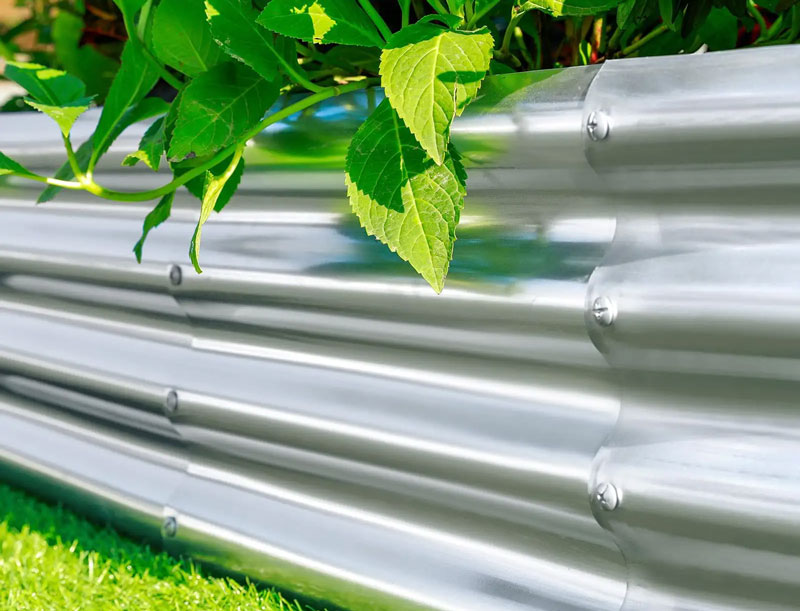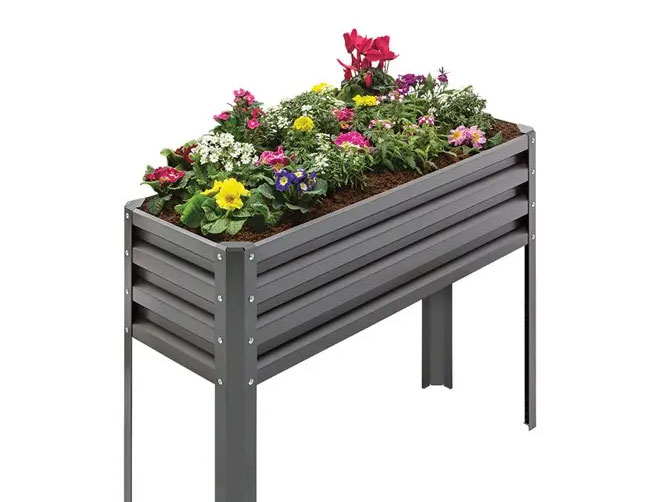Creating your own raised bed garden can transform any landscape into a thriving oasis of vegetation. This article is an essential read for anyone looking to enhance their gardening prowess or start fresh with a new gardening project. With simple, comprehensive instructions and expert tips, you’ll be well-equipped to build your raised garden bed and enjoy its benefits for years to come.

What Are Raised Bed Gardens and Why Are They Beneficial?
Raised bed gardens are elevated garden plots typically built to improve soil quality and drainage while easing the strain on your back. Raised beds are especially valuable in urban settings or areas with poor native soil. These gardens make planting more accessible and tend to produce healthier plants.
Vorteile:
- Improved Drainage: Better control over water levels.
- Enhanced Soil Quality: Opportunity to start with fresh, nutrient-rich soil.
- Increased Accessibility: Easier on the back and knees for gardeners.
- Vielseitigkeit: Suitable for all types of spaces, such as homes, parks, businesses, and farms.
Learn more about how raised gardens can improve your landscape with Dekorativer Gartenzaun.
Choosing the Right Bed Size for Your Garden Space
Selecting the correct bed size is crucial in raised bed gardening. The dimensions depend on your available space and the plants you plan to grow.
Considerations:
- Length and Width: Typically, 4×8 feet is a manageable size. This allows for reachable plants from all sides without stepping into the soil.
- Tiefe: A depth of 12-18 inches is typical, but it may vary for certain root crops.
Ensure your garden bed fits seamlessly into your garden area using Temporäre Zaunelemente.
What Bed Materials Are Best for Raised Beds?
The material you choose impacts the longevity and appearance of your raised bed garden. Options vary from durable to more aesthetically pleasing choices.
Popular Materials:
- Holz: Cedar is a favored choice due to its resistance to rot and pests.
- Galvanized Metal: Offers durability and a modern look.
- Recycled Plastic: An eco-friendly and resilient option.
For an array of fencing and panel options, explore our Heavy Duty Temporary Fence.
How to Build a Raised Garden Bed: A Step-by-Step Approach
Embarking on this gardening journey requires the right steps to ensure success from the start.
Steps to Follow:
- Plan: Decide on location, design, and materials.
- Gather Materials: Collect timber boards, screws, and tools.
- Construct Frame: Securely fasten the boards to create a practical frame.
- Prepare Base: Add a layer of hardware cloth to deter pests.
- Fill: Add a mixture of native soil and compost.
Building your raised bed is an exciting venture. To avoid pitfalls, consider our Step-by-Step Guide.
What Type of Soil to Fill Your Raised Bed With?
Your choice of soil significantly affects the success of your garden. Good quality garden soil bolsters plant growth and health.
Ideal Soil Mix:
- Topsoil
- Compost
- Perlite or Sand for Drainage
For the best results, try filling your raised bed with a mix of these components. Remember, using quality soil not only enhances plant growth but also makes it effortless to keep your soil in top shape.
How to Ensure Proper Drainage for Optimal Plant Health
Proper drainage is essential to prevent waterlogging, which can lead to root rot and other issues.
Tips for Effective Drainage:
- Positioning: Place beds on a slight slope to aid natural drainage.
- Soil Mixture: Incorporate materials that improve water flow.
- Drainage Holes: Ensure there are adequate holes in the bottom of your raised bed.
See how proper drainage can be enhanced with temporary setups using Temporary Fence Construction Panels.

Using Raised Beds for Different Plants and Crops
Raised beds offer versatility, providing ideal conditions for diverse plants ranging from vegetables to flowers.
Plant Types:
- Vegetables: Tomatoes, lettuce, and carrots thrive in well-amended soil.
- Flowers: Add color with marigolds and petunias.
- Herbs: Basil and mint are garden staples within reach for fresh cooking.
Explore various ways to optimize your plant choice with the help of Raised Bed Garden Fencing.
Tips for Maintaining and Keeping Your Raised Bed Productive
Keeping a raised bed garden thriving requires some commitment, but the payoff is a stunning vegetable or flower garden.
Maintenance Tips:
- Regular Watering: Adapt to climate changes by adjusting watering times.
- Weeding and Mulching: Prevents competition and retains moisture.
- Fertilizing: Organic compost enhancements maintain fertility.
Gain more out of your gardening investment with consistent upkeep, drawing inspiration from our Garden Design.
Common Mistakes to Avoid in Raised Bed Gardening
Avoiding common mistakes can ensure a productive and enjoyable gardening experience.
Mistakes to Circumvent:
- Overwatering: Leads to nutrient washouts.
- Inadequate Space: Crowding plants diminishes growth.
- Poor Soil Mix: Results in stunted plant growth.
For a comprehensive approach, utilize guides and tutorials like our Kitchen Garden Revival.
FAQs on Raised Bed Gardening
How deep should a raised garden bed be?
Typically, 12 to 18 inches is ideal for most plants.
What type of wood should I use for building raised beds?
Cedar is a top choice for its resistance to rot and insect damage.
Can I use native soil for my raised bed?
While native soil can be used, mixing with compost and other amendments improves quality.
Do raised beds require a lot of maintenance?
Regular maintenance is necessary but often less than traditional gardens due to improved soil conditions.
What are the benefits of using galvanized metal for raised beds?
Galvanized metal is long-lasting and weather-resistant, offering a modern aesthetic.
Why is my raised garden bed not producing as expected?
Investigate soil quality, sun exposure, and water drainage for potential issues.

Key Takeaways:
- Raised beds offer flexibility and improve gardening conditions.
- Select durable materials to ensure longevity.
- Proper planning and soil management yield productive gardens.
- Avoid common mistakes, and regularly maintain your garden for optimal results.
By following this comprehensive guide, you’re set to embark on a rewarding gardening journey with your very own raised bed garden. Consider enhancing your garden with suitable fencing and panels from Metalfence Tech. Enjoy the process, and may your garden flourish beautifully!









